I am aiming to calculate daily climatology from a dataset, i.e. obtain the sea surface temperature (SST) for each day of the year by averaging all the years (for example, for January 1st, the average SST of all January 1st from 1982 to 2018). To do so, I made the following steps:
DATA PREPARATION STEPS
Here is a Drive link to both datasets to make the code reproducible: link to datasets
First, I load two datasets:
ds1 = xr.open_dataset('./anomaly_dss/archive_to2018.nc') #from 1982 to 2018
ds2 = xr.open_dataset('./anomaly_dss/realtime_from2018.nc') #from 2018 to present
Then I convert to pandas dataframe and merge both in one:
ds1 = ds1.where(ds1.time > np.datetime64('1982-01-01'), drop=True) # Grab all data since 1/1/1982
ds2 = ds2.where(ds2.time > ds1.time.max(), drop=True) # Grab all data since the end of the archive
# Convert to Pandas Dataframe
df1 = ds1.to_dataframe().reset_index().set_index('time')
df2 = ds2.to_dataframe().reset_index().set_index('time')
# Merge these datasets
df = df1.combine_first(df2)
So far, this is how my dataframe looks like:
NOTE THAT THE LAT,LON GOES FROM LAT(35,37.7), LON(-10,-5), THIS MUST REMAIN LIKE THAT
ANOMALY CALCULATION STEPS
# Anomaly claculation
def standardize(x):
return (x - x.mean())/x.std()
# Calculate a daily average
df_daily = df.resample('1D').mean()
# Calculate the anomaly for each yearday
df_daily['anomaly'] = df_daily['analysed_sst'].groupby(df_daily.index.dayofyear).transform(standardize)
I obtain the following dataframe:
As you can see, I obtain the mean values of all three variables.
QUESTION
As I want to plot the climatology data on a map, I DO NOT want lat/lon variables to be averaged to one point. I need the anomaly from all the points lat/lon points, and I don't really know how to achieve that.
Any help would be very appreciated!!

